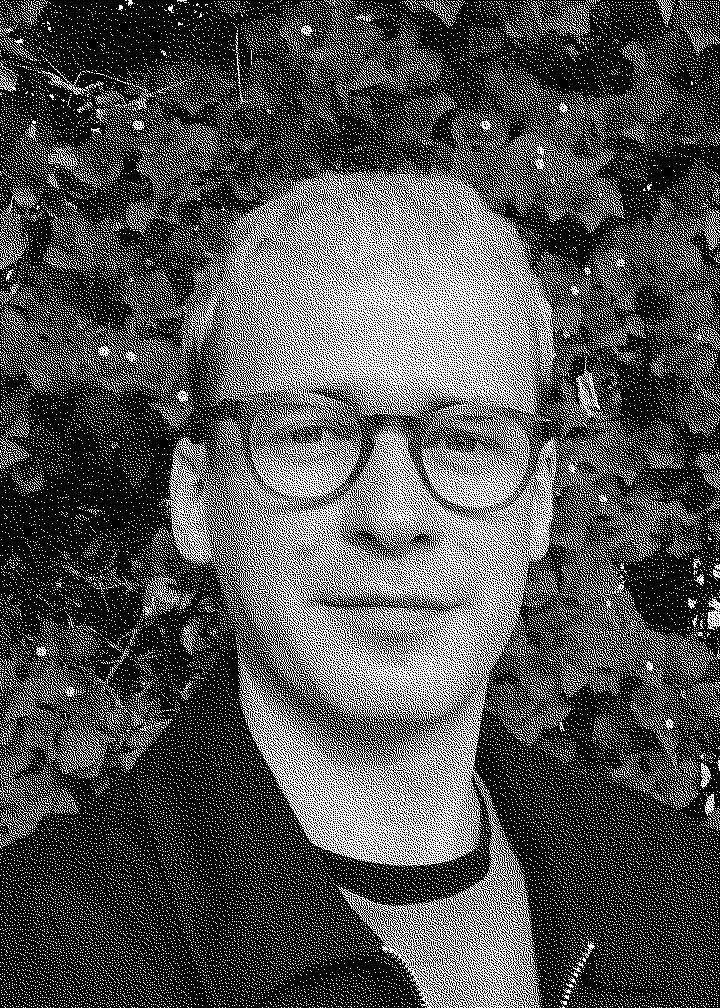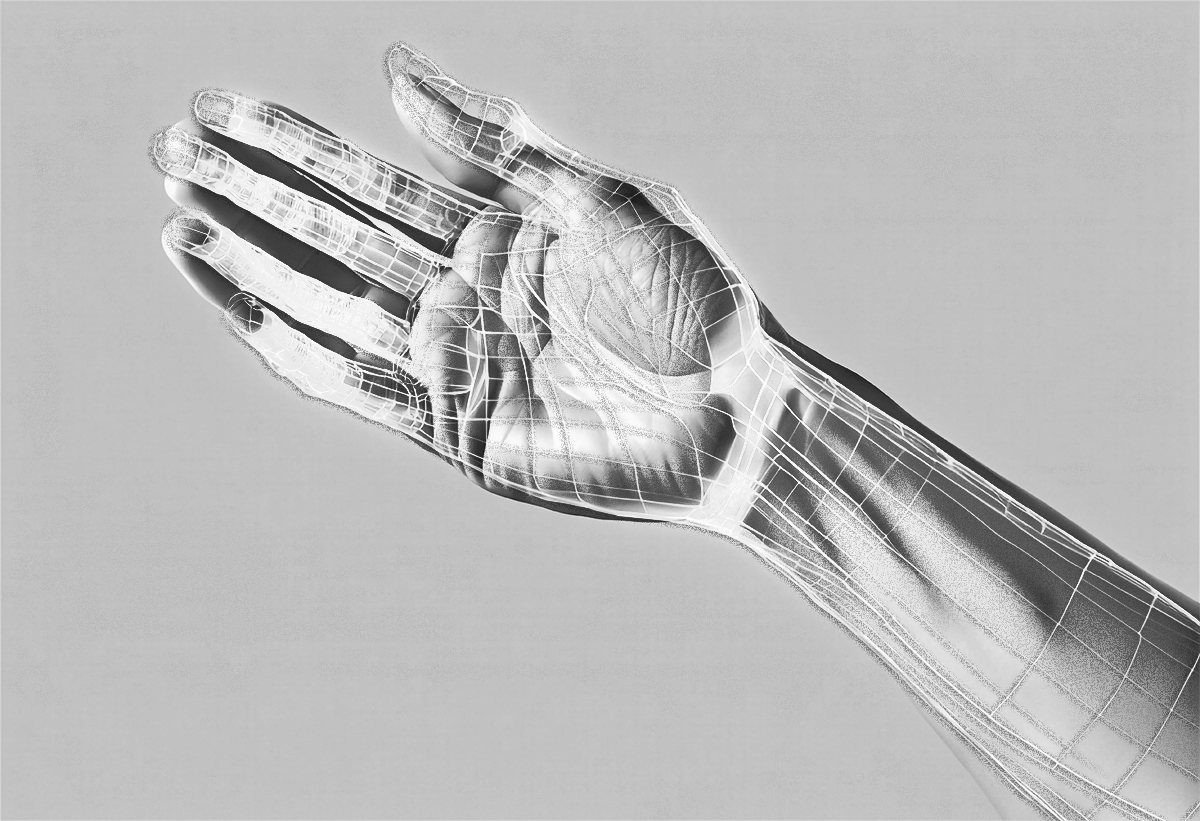
Jack Armitage is is the founder of Tölvera.
Picture the space of all possible forms of intelligence. Now zoom in — way in — until you see a tiny mote. That’s where we’re stuck right now: trapped in the speck of machine learning and large language models.
While these tools are impressive, they represent just a fraction of this possibility space. AI discourse risks becoming a closed loop, with concerns about ML’s impact met only with proposals for better ML models, reinforcing our fixation. How do we build outward to see and benefit from intelligence in all its wonderfully diverse embodiments?
Intelligence as Embodied Movement
Intelligence is not a binary property that systems either have or lack — it exists along many spectra. Step outside the ML mote, and you’ll encounter intelligence expressed through movement and relationship: birds coordinating their flight in intricate aerial dances, bees building architectural marvels through emergent choreography, mycelia and trees communicating through vast underground networks.1 These aren’t metaphors — they are distinct intelligences, operating through embodied collective dynamics that we’re only beginning to understand.
The search for intelligence doesn’t require looking even that far. Our own bodies are filled with cells exhibiting cognitive capabilities — even non-neural cells can learn and remember, displaying the same learning patterns we typically associate with brains.2 Our bodies are a remarkable example of collective intelligence across multiple scales: from molecular networks that adapt and learn, to organs maintaining their shape through complex goal-directed behavior, to the body’s ability to heal and regenerate.3 We are made of layers upon layers of intelligence engaged in continuous dialogue.
Learning to See Differently
Could we learn to communicate with these intelligent cellular collectives, guiding them toward health through their own problem-solving abilities? Can we develop empathy across scales — even for cancer cells that have forgotten how to participate in the larger choreography of the body, or for aging systems of governance and finance that serve the few while excluding the many? To do so, we need new ways of seeing that transcend binaries like individual/collective or conscious/unconscious, uniting scientific understanding with artistic expression.
In our Mozilla Builders cohort, we’re seeing the beginnings of broader approaches to cognition. Transformer Lab is making large language models more accessible and understandable. Sartify is developing natural language processing for Swahili speakers. Marker is democratizing how we extract information from documents. Each project affords a bridge that makes the intelligence landscape more traversable and explorable.
Nurturing Broader Visions
Similarly, the early pioneers of personal computing weren’t just building tools; they were creating new mediums for thought and understanding. Alan Kay, whose biology background inspired his pioneering work in computing, described computation as “the first Romantic art form” — not because computers can create art, but because they allow us to explore our ideas as art.4 Like Kay’s analogy of computers as “instruments whose music is ideas,” intelligent systems can enliven human imagination rather than merely mimic aspects of it.
When researchers at Xerox PARC pioneered personal computing in the 1970s, some visitors like Steve Jobs and Bill Gates saw the transformative potential of the graphical interface.5 But as the technology was commercialized, much of the deeper vision of computing as a dynamic medium for human expression became overshadowed and forgotten. Or, as Kay reflected more bluntly, we got “mental sugar water” instead of “wings for the mind.”6
Today at Dynamicland, researchers explore computation not as a product but as a communal, embodied practice — something that belongs to the public like writing and mathematics. Their approach privileges diverse human intelligences over computer intelligence, creating spaces where communities can develop new forms of literacy together. Yet, like at PARC, visitors often fixate on the everyday paper interfaces while missing this broader mission of computation as a social practice.
Maybe language models are like the computer mouse or paper interface in this new story – exciting innovations that hint at far greater possibilities if we can keep our vision broad enough to grasp them.
Building Together
I believe we need builders of all kinds to expand our experiences with different intelligences. Not just technologists, but artists working alongside scientists, traditional knowledge holders alongside innovators, students alongside teachers. Not just humans, but humans working side-by-side with animals, plants, cells, machines, and everything in between. And not just contemporary intelligence, but as Robin Wall Kimerer advocates, two-eyed seeing that commingles science with indigenous wisdom.7 This isn’t about more technology for its own sake — it’s about better ways of working with myriad forms of intelligence, at all scales, for all creatures.
Perhaps the most valuable thing the Mozilla Builders are creating isn’t code or models — it’s understanding. Deep understanding within themselves at a cellular level, and the ability to share that understanding with others through their ingenious artifacts. We need this understanding to ripple outward, helping us see and think differently about intelligence itself. Only then can we better care for and support each other and every mote of intelligence out there, from the nanoscopic to the galactic.
So let’s build with a humble yet playful sense of what intelligence can be. Let’s create systems that illuminate the space of possible intelligences, privileging communal understanding, wisdom, and kindness. For it’s not simply about what we build, or that we are building, but about how building helps us learn to see.
//
Thanks to Nathaniel Brewster, Hayden Dunham, Luke Iannini and Robin Morabito for comments.
Footnotes:
- Lars Chittka. The Mind of a Bee. Princeton University Press, 2022.
- N. V. Kukushkin, R. E. Carney, T. Tabassum, and T. J. Carew. The Massed-Spaced Learning Effect in Non-Neural Human Cells. Nature Communications, 15(1):9635, 11 2024.
- Michael Levin. The Multiscale Wisdom of the Body: Collective Intelligence as a Tractable Interface for Next-Generation Biomedicine. OSF, 2024.
- Alan Kay. The Center of “Why?”. Viewpoints Research Institute, 2004.
- Michael Hiltzik. Dealers of Lightning: Xerox PARC and the Dawning of the Computer Age. New York, NY: HarperCollins, 1999.
- Pankaj Mishra. Computing pioneer Alan Kay on AI, Apple and future, 2016. https://archive.factordaily.com/alan-kay-apple-steve-jobs/.
- Robin Wall Kimmerer. Braiding Sweetgrass: Indigenous Wisdom, Scientific Knowledge and the Teachings of Plants. Milkweed Editions, 2013.
About the Author
Jack Armitage
Jack is the founder of Tölvera. His research interests include embodied interaction, craft practice, and design cognition. He also produces, performs, and live code music as Lil Data, as part of the PC Music record label.
He has a Media and Arts Technologies doctorate from Queen Mary University of London, where he studied in Prof. Andrew McPherson’s Augmented Instruments Lab. During his PhD, Jack was a Visiting Scholar at Georgia Tech under Prof. Jason Freeman. Before then, he was a Research Engineer at ROLI after graduating with a BSc in Music, Multimedia, and electronics from the University of Leeds.




